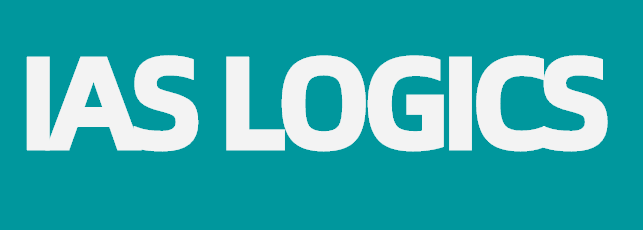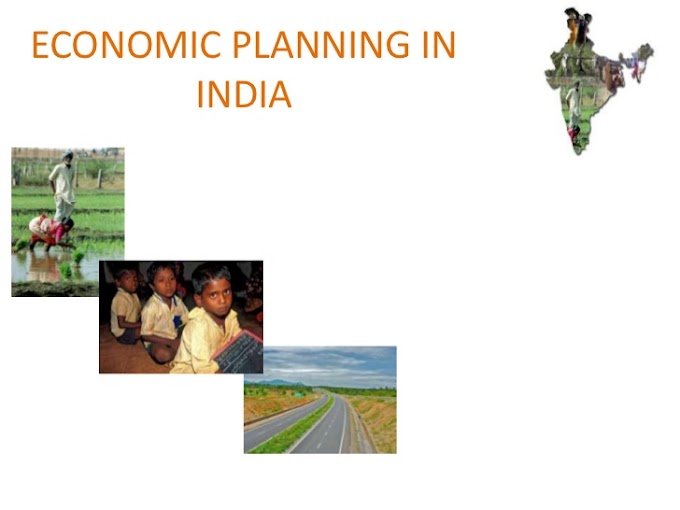Food provides us the necessary fuel for our daily activities. These foods are broken down by digestive processes, releases energy and transported. The food passes through the digestive tract which starts from the mouth and finishes at the anus.
Food and its composition
Food, anything eaten to satisfy appetite and to meet physiological needs for growth, to maintain all body processes, and to supply energy to maintain body growth, to maintain all body process, and to supply energy to maintain body temperature and activity. Foods differ markedly in the amount of nutrients they contain; they can be classified on the basis of their composition. They can be classified as:
- Carbohydrates
- Lipids(Fats)
- Proteins
- Vitamins
- Minerals
Carbohydrates
They are compounds containing carbon, hydrogen and oxygen and have a general formular Cx(H20)y. It is the major component of our food as it all energy need by our cells. So athletes, labourers doing heavy work need carbohydrates in their food. The main sources are rice, wheat, maize, potato, banana, sugar etc. Carbohydrates are divided into
a) Monosaccharides are simple sugars consisting of three or more carbon atoms. e.g. Ribose, deoxyribose(pentoses),glucose, fructose (fruit sugar) and galactose( hexoses). (Our body digests them quickly and easily; it is sweat tasting and found in fruits)
b) Disaccharides are formed by the union of two monosaccharids. Maltose(malt sugar) = glucose+glucose
Lactose(Milk sugar) = glucose+galactose
Sucrose(cane sugar) = glucose+fructose.
(These takes longer to be digested than Monosaccharides. Found in foods like bread, noodles, rice, vegetables.)
c) Polysaccharids are made up of large number of monosaccharids units(300 to over 1000). E.g. starch, cellulose in plants , glycogen, chitin in animals.
The nutrional role of carbohydrate is the production of energy. These are main sources of blood glucose and stored in tissues as glycogen in liver and muscles for further use when necessary.
Fats (Lipids)
These are a group of fatty substances found in all living organisms and these contain less amount of oxygen than in carbohydrates but yield twice the amount of energy than carbohydrates. Fats are not soluble in water but in alcohol, ether, or organic solvents. Fat is more suitable as stored food, insulates our body from cold, provides cushioning effects for our organs, and helps the fat soluble vitamins to be transported through when they are needed. The important sources are fatty acids and glycerol. Fatty acids can be grouped into saturated fatty acid and unsaturated fatty acids. These are designated as saturated or unsaturated, depending on whether the chemical bonds between the carbon atoms of the fat molecules contain all the hydrogen atoms they are capable of holding (saturated) or have capacity for additional hydrogen atoms (unsaturated). Saturated fats generally are solid at room temperature; unsaturated and polyunsaturated fats are liquids. Unsaturated fats may be converted to saturated fats by adding hydrogen atoms in a process known as hydrogenation. Saturated fatty acids come from animal foods like meat, milk, cheese, and some oils that come from plants. Unsaturated fatty acids are different - they come from plants and fish. Together, these two substances are grouped and called the fat content in food.
Proteins
Proteins are complex compounds formed from about 20 amino acids which are needed for the synthesis of protoplasm. These amino acids are composed of carbon, hydrogen, oxygen, nitrogen and sometimes sulphur. These are essential for body growth. Some of the amino acids are not produced in the animal body and it must by supplied with food. These are called essential amino acids and the rest are non essential amino acids. ( It does not mean that is not essential for our body but not essential in our food!)
The deficiency causes Kwashiorkor in children below 5 years who instead of mothers milk take mainly carbohydrate diet. If the mothers milk is replaced to children below 1 year it causes Marasmus.
| Food | Calorific Value | Physiological Value |
| Carbohydrates | 4.1 kcal | 4kcal |
| Fat | 9.45 kcal | 9 kcal |
| Protein | 5.65 kcal | 4 kcal |
Vitamins
These organic substances of various types which cannot be synthesised in sufficient quantities by the body and have to be supplied in its diet. Vitamins can be classified into water soluble vitamins and fat soluble vitamins. Fat soluble vitamins are stored in our body and water soluble dont get stored as much in our body. Instead, they travel through your blood stream. The deficiency of vitamins causes various diseases. A detailed list containing the sources, benefits and deficiency of vitamins are given below:
| VITAMIN | FOOD SOURCES | HEALTH BENEFIT | DEFICIENCY |
| Fat Soluble | |||
| A (Retinol) | Eggs, butter, whole milk, vegetables and liver. | Component of light-sensitive pigments in eye, epithelial tissue maintenance | Night blindness, Xerophthalmia or dry eye, extremely dry skin (Dermatosis) |
| D (Calciferol) | Fish, egg yolks and the rays of the sun | Calcium absorption, bone formation | Rickets (bone deformities) in children, Osteomalacia in Adult. |
| E (Tocopherol) | Margarine, seeds, green leafy vegetables | Protects fatty acids and cell membranes from oxidation | Sterility |
| K | Green leafy vegetables | Blood clotting | Uncontrolled bleeding |
| Water Soluble | |||
| B1 (Thiamine) | Organ meats, pork, grains, legumes | Carbohydrate metabolism, nerve and heart function | Beriberi (weakened heart, edema, nerve and muscle degeneration |
| B2 (Riboflavin) | Milk products, liver, eggs, grains, legumes | Energy metabolism | Ariboflavinosis-Eye irritation, inflammation and breakdown of skin cells |
| B3 (Niacin or Nicotinic Acid) | Liver, lean meats, grains, legumes | Oxidation-reduction reactions in cellular respiration | Pellegra (skin and gastrointestinal disorders, nerve inflammation, mental disorders) |
| B5 (Pantothenic Acid) | Milk products, liver, eggs, grains, legumes | Energy metabolism | Fatigue, loss of coordination |
| B5 (Pantothenic Acid) | Milk products, liver, eggs, grains, legumes | Energy metabolism | Fatigue, loss of coordination |
| B6 (Pyridoxine) | Whole-grain cereals, vegetables, meats | Amino acid metabolism | Convulsions, irritability, kidney stones |
| B12 (Cobalamin) | Red meats, eggs, dairy products | Nucleic acid production | Pernicious anemia, neurological disorders |
| Biotin | Meats, vegetables, legumes | Fat synthesis and amino acid metabolism | Depression, fatigue, nausea |
| C (Ascorbic Acid) | Citrus fruits, green leafy vegetables, tomatoes | Collagen formation in teeth, bone, and connective tissue of blood vessels; may help in resisting infection | Scurvy (breakdown of skin, blood vessels, and teeth |
| Folic Acid | Whole-wheat foods, green vegetables, legumes | Nucleic acid metabolism | Anemia, diarrhea |
Minerals
Mineral salts are needed in very small quantities but very essential for the functioning of the body. Blood contains 0.9 per cent salt, most of which is sodium chloride, very essential for maintaining osmotic pressure.
Anaemia is caused due to iron deficiency and characterised by deficiency of haemoglobin in red blood cells.
Hypokalemia is caused by loss of potassium and characterised by kidney damage, rise in hear beat, paralysis of muscles.
Hyponatremia is due to the increased loss of sodium which leads to dehydration, low blood pressure and loss of body weight.
Simple Goitre is casued by deficiency of iodine which regulates the secretion of the thyroxine from the thyroid gland. It causes the increased production of thyroid stimulating hormone which brings about the enlargement of gland.
| MINERAL | FOOD SOURCES | HEALTH BENEFIT | DEFICIENCY |
| Major | |||
| Calcium | Milk, cheese, dried legumes, vegetables | Bone and teeth formation, blood clotting, and nerve transmission | Rickets, osteoporosis, convulsions |
| Chlorine | Foods containing salt; some vegetables and fruits | Fluid regulation between cells or cell layers | Acid-base imbalance in body fluids (very rare) |
| Magnesium | Whole grains; green, leafy vegetables | Enzyme activation, protein synthesis | Growth failure, behavior problems, spasms |
| Phosphorus | Milk, cheese, yogurt, fish, poultry, meats, | Bone and teeth formation, acid-base balance | Weakness, loss of calcium |
| Potassium | Bananas, leafy vegetables, potatoes, cantaloupe, milk, meats | Acid-base balance and fluid balance maintenance, nerve transmission | Muscle cramps, mental confusion, loss of appetite, irregular cardiac rhythm - hypokalamia |
| Sulfur | Fish, poultry, meats | Acid-base balance maintenance and liver function | Disorders unlikely if body gets small amounts needed |
| Sodium | Table salt | Acid-base balance and body water balance maintenance, nerve function | Hyponatremia-Muscle cramps, reduced appetite, mental apathy |
| Trace | |||
| Chromium | Legumes, cereals, organ meats, fats, vegetable oils, meats, whole grains | Glucose metabolism | Adult onset diabetes |
| Copper | Meats, drinking water | Red blood cell formation | Anemia, impairs bone and nervous tissue development |
| Fluorine | Drinking water, tea, seafood | Bone structure maintenance, decay-resistant teeth | Osteoporosis; tooth decay |
| Iodine | Salt-water fish, shellfish, dairy products, vegetables, iodized salt | Component of thyroid hormone | Enlarged thyroid (goiter) |
| Iron | Lean meats, eggs, whole grains, green leafy vegetables, legumes | Hemoglobin formation in blood; energy metabolism | Anemia |
| Selenium | Seafood, meat, grains | Prevents breakdown of fats and other body chemicals | Anemia |
| Zinc | Lean meat, whole-grain breads and cereals, dried beans, seafood | Component of many enzymes included in digestion, cell repair, sexual reproduction | Growth failure, small sex glands, delayed wound healing |
Enzymes
Enzymes are biological catalysts. These are the secretions of digestive gland with ducts. These are composed of amino acids(proteins); it t generally accelerate biochemical reaction by reducing the energy requirement, however certain substances called inhibitors slow down the rate of enzymatic reaction. These are specific in their action and on a particular substrate only. Each enzyme has its own pH and temperature at which it works. It show maximum activity at body temperature known as optimal temperature. Some enzymes are formed in an inactive form called the precursors or zymogens and are later activated by a number of agents, including co-enzymes or co factors.
Digestion in Humans
Now let us see, how our body digests the food consumed by us. Ingestion and mastication or chewing takes place in the mouth and it is passed along the oesophagus to the stomach by peristalsis (a type of movement). In stomach food mixes with gastric juices such as hydrochloric acid and pepsin and become a watery paste called chyme and enters into wider part of small intestine called duodenum. (the rest is called ileum). The later stage of digestive process is taken place with the help of bile which is stores in gall bladder and intestinal juices. When it reaches the large intestine or colon it absorbs large amount of water and vitamin K which is synthesized by bacteria. The newly absorbed material other than emulsified fat first brought to liver by portal vein. The liver helps to keep the blood sugar(glucose) level constant and make toxic by product into harmless substances and produces wide variety of substances such as proteins and bile. The numerous chemical reactions in liver produces significant amount of heat and helps to maintain a constant body temperature. Most of the digested food and minerals are absorbed in small intestine with the help of small intestine with the help of folds called villi and microvilli. The glycerids and fatty acids are transported via lymph vessels.
Jaundice
It is yellowing of the skin, conjunctivae and muscous membranes caused by excessive amounts of bile pigments in blood tissues. These pigments are present in blood as a result of the breakdown of haemoglobin in red blood cells. These are filtered through the liver and excreted in feces.
Liver
The liver is an organ in vertebrates including humans. It plays a major role in metabolism and has a number of functions in the body including detoxification, glycogen storage and plasma protein synthesis. It also produces bile which is important for digestion. Medical terms related to the liver often start in hepato- or hepatic from the Greek word hepar for "liver". It converts excess glucose to glycogen (glycogen synthesis). When the cells needs glucose, liver converts the glycogen into glucose (glycogenolysis). It neutralises toxins. It is the main site of red blood cell production of an embryo(upto 42nd week of gestation).
Pancreas
The pancreas has both an exocrine and an endocrine secretion. The exocrine secretion is made up of a number of enzymes that are discharged into the intestine to aid in digestion. The endocrine secretion, insulin, is important in the metabolism of sugar in the body. Insulin is produced in small groups of especially modified glandular cells in the pancreas; these cell groups are known as the islets of Langerhans.





